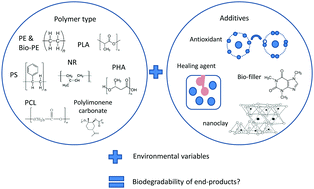Environmental performance of bio-based and biodegradable plastics: the road ahead
Abstract
Future plastic materials will be very different from those that are used today. The increasing importance of sustainability promotes the development of bio-based and biodegradable polymers, sometimes misleadingly referred to as ‘bioplastics’. Because both terms imply “green” sources and “clean” removal, this paper aims at critically discussing the sometimes-conflicting terminology as well as renewable sources with a special focus on the degradation of these polymers in natural environments. With regard to the former we review innovations in feedstock development (e.g. microalgae and food wastes). In terms of the latter, we highlight the effects that polymer structure, additives, and environmental variables have on plastic biodegradability. We argue that the ‘biodegradable’ end-product does not necessarily degrade once emitted to the environment because chemical additives used to make them fit for purpose will increase the longevity. In the future, this trend may continue as the plastics industry also is expected to be a major user of nanocomposites. Overall, there is a need to assess the performance of polymer innovations in terms of their biodegradability especially under realistic waste management and environmental conditions, to avoid the unwanted release of plastic degradation products in receiving environments.



 Please wait while we load your content...
Please wait while we load your content...